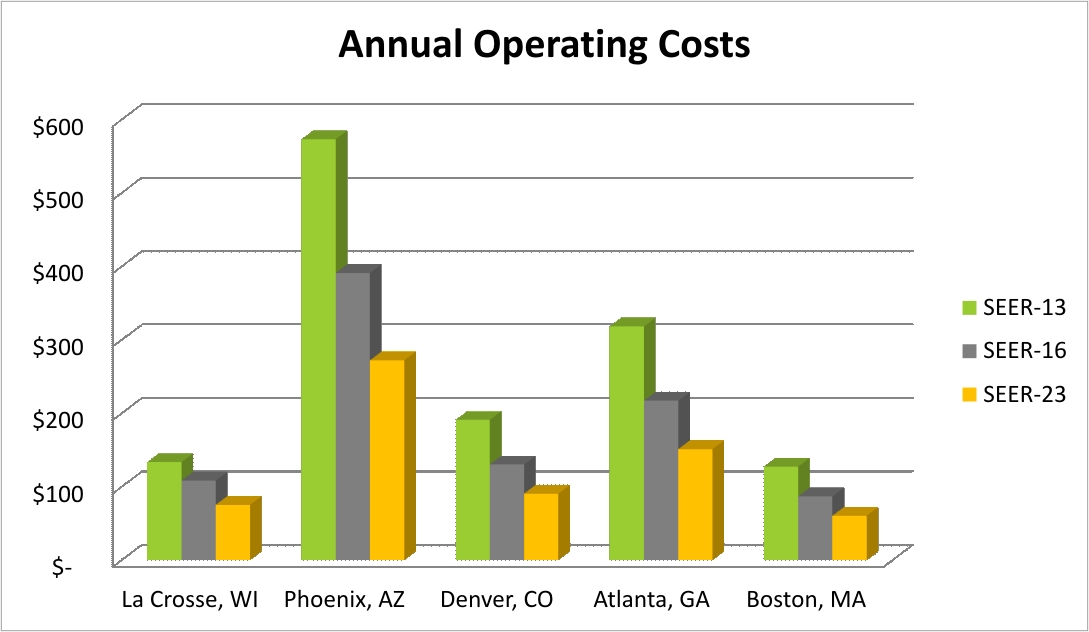
Often times, reviewing different heating and cooling efficiency ratings is like looking into a bowl of alphabet soup. Trying to determine which rating is used for which type of equipment can be even more confusing. Each piece of heating and cooling equipment is tested and given an efficiency rating, similar to a vehicle rating in miles per gallon (mpg). However, the ratings are not the same. More familiarity with efficiency ratings can improve the selection process and help determine when to spend the extra money for high-efficiency equipment.
EER and SEER
The Energy Efficiency Ratio (EER) is typically used to define cooling efficiencies of heat pumps and unitary air-conditioning equipment. It is determined by the cooling rate (or heat removed) in Btu (British thermal units) divided by the energy input in Watt-hours. The Seasonal Energy Efficiency Ratio (SEER) is the total annual cooling output in Btu divided by the annual energy input in Watt-hours. SEER is generally used for residential and commercial units under 5 tons cooling capacity while EER is used for larger capacity cooling equipment. The average home requires 2.5 tons of cooling capacity, with one ton of cooling capacity equaling 12,000 Btu/hr.
The higher the EER or SEER, the more energy efficient the equipment. The current minimum standard SEER for new air conditioners is 13. Equipment is available with SEER ratings as high as 23. The chart shows the difference in operating costs of a 3-ton air conditioning unit in different locations throughout the country at SEER ratings of 13, 16, and 23. An estimated cost of $0.115 kWh was used for all locations.
kW/ton
When dealing with large commercial and industrial air-conditioning, kW/ton is typically used as the efficiency rating. This efficiency ratio is the ratio of power consumption in kW, and the rate of heat removed in tons. Chillers with lower kW/ton efficiency ratios are more efficient – the opposite of smaller equipment using EER and SEER ratings.
COP
Coefficient of Performance (COP) is the efficiency rating used for refrigeration units and systems. COP is the ratio of the useful energy (heat removed for refrigeration) in Btu to the energy applied, also in Btu. To add to the confusion, COP is also used as the efficiency rating for the cooling and heating processes in heat pumps. A higher COP ratio indicates a more efficient refrigeration or heat pump system.
Conclusion
“A is for Apple, B is for Beans, COP, Dill, EER. Grab yourself a letter, throw it in a pot. Can’t get enough of that Alphabet Soup.” Comparing the wrong energy efficiency ratios can be like comparing apples to beans. By doing a little research, the time spent stewing in the pot can be greatly reduced.




